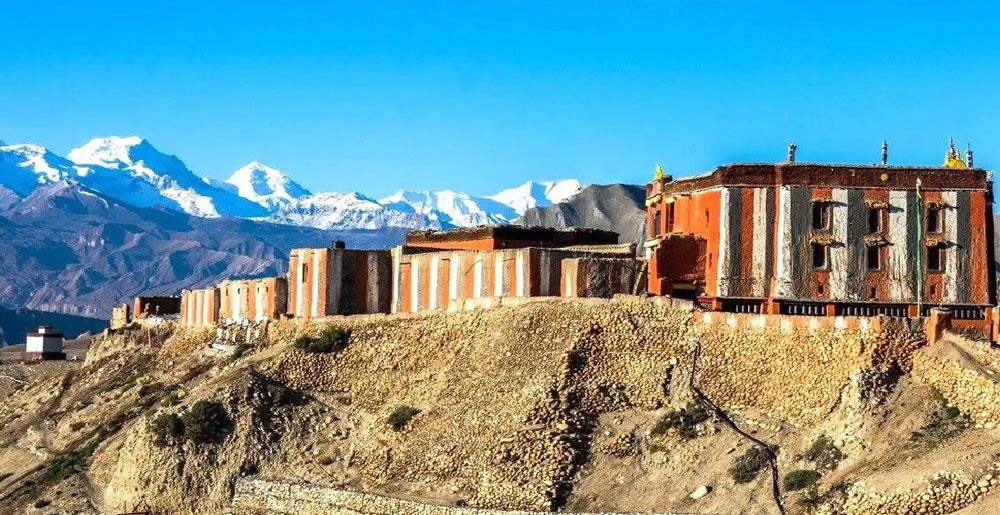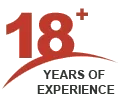Why is Upper Mustang Restricted
Are you dreaming of stepping into a place that feels like a page from a forgotten history book? A place where ancient Tibetan culture, dramatic landscapes, and a sense of mystery live on, untouched by modern chaos? That place is Upper Mustang, nestled in the rain-shadow area of the Himalayas in Nepal. But here’s the twist: you can’t just pack your bags and head there. Upper Mustang is a restricted region, and visiting it requires a special permit and some planning.
So, why is Upper Mustang restricted? What makes this high-altitude desert so different?
Let’s take a dive into the reasons behind the restriction, unraveling the fascinating history, culture, and geography that make Upper Mustang one of Nepal’s most guarded treasures.

Table of Contents
- What and Where is Upper Mustang?
- A Glimpse into the Kingdom of Lo
- The Mystery of Lo Manthang
- Why is Upper Mustang Restricted? – A Quick Overview
- Protecting the Unique Tibetan Culture
- Preserving the Fragile Environment
- Border Security
- Why Only Group Treks are Allowed in Upper Mustang
- Permit System: Cost, Rules, and Process
- Is Upper Mustang Worth to Visit?
- Conclusion
- FAQs
What and Where is Upper Mustang?
Upper Mustang is a remote region in north-central Nepal, bordering the Tibet of China. It lies in the rain shadow of the Annapurna and Dhaulagiri ranges, which makes it a dry and barren land unlike the lush greenery typical of Nepal.
Geographically, it’s divided into two parts:
Lower Mustang – More accessible and open to all tourists.
Upper Mustang – Restricted and protected, requiring a special permit and a licensed guide.
It’s often called the Last Forbidden Kingdom, and once you see it, you’ll understand why.
A Glimpse into the Kingdom of Lo
The Kingdom of Lo, also known as Upper Mustang, was founded around 1380 by Ame Pal, a warrior and devout Buddhist from Western Tibet, who built the fortress of Ketcher Dzong and established the walled capital Lo-Manthang. Positioned strategically on trade routes between Tibet and India, the kingdom flourished culturally and economically while preserving its Tibetan Buddhist heritage. Upper Mustang remained a restricted until 1992, which helped protect its unique culture and environment, and the monarchy officially ended in 2008 when Nepal became a republic. Today, Upper Mustang offers a rare glimpse into this ancient Himalayan kingdom through its well-preserved walled city, monasteries, traditional customs, and stunning arid landscapes
The Mystery of Lo Manthang
Lo Manthang is the capital of Upper Mustang and a magical place that feels frozen in time.
Surrounded by a wall from the 15th century
Home to royal palaces, ancient Buddhist monasteries, and mud-brick houses
Inhabited by a few hundred people living much as they did centuries ago
This is not a place that can handle the rush of selfie-stick-wielding tourists. Restrictions help preserve the authenticity of this medieval kingdom.
Why is Upper Mustang Restricted? – A Quick Overview
You might wonder, “If it’s so fascinating, why not let everyone visit?” Great question.
The restriction on Upper Mustang is rooted in a mix of culture, environmental concerns, and geography. In short, it’s about protection and preservation of a unique lifestyle, and a fragile ecosystem.
Let’s explore these layers in more depth.
Protecting the Unique Tibetan Culture
Upper Mustang is often described as a living museum of Tibetan culture. The isolation has allowed ancient monasteries, festivals, dialects, and traditions to survive untouched.
Allowing free tourist access could risk:
Cultural dilution
Commercial exploitation
Loss of traditional values and customs
By keeping it restricted, the Nepalese government ensures visitors are conscious travelers, not mindless tourists. It’s like walking into a sacred temple, you go in with respect, not noise.
Preserving the Fragile Environment
Upper Mustang lies in a trans-Himalayan desert, where life survives on minimal water, agriculture is seasonal, and resources are scarce.
Mass tourism, if uncontrolled, could:
Pollute water sources
Damage ancient cave systems
Create waste management issues
Overburden limited infrastructure
Restrictions ensure that only a small number of responsible trekkers enter each year, protecting the land and its people.
Border Security
Upper Mustang shares an open border with Tibet (China). The Nepali government restricts access to control cross-border movement, prevent illegal activities, and maintain national security.
Why Only Group Treks are Allowed in Upper Mustang
The reasons are:
Safety: The terrain is remote and harsh
Cultural Respect: Groups guided by licensed professionals are more likely to behave responsibly
Permit System: Cost, Rules, and Process
To trek Upper Mustang, here’s what you need:
Restricted Area Permit (RAP): USD 500 for 10 days (USD 50 per additional day)
ACAP (Annapurna Conservation Area Permit): USD 30
TIMS (Trekkers Information Management System): Required for trekking
Rules:
Must travel in a group of two or more
Must hire a licensed guide
Permits are only issued through registered trekking agencies like Excellent Himalaya Trek and Expedition.
Is Upper Mustang Worth to Visit?
In a word: absolutely.
Even though, it seems expensive than other treks, but what you get in return is:
A rare peek into a hidden kingdom
Untouched Tibetan Buddhist culture
Spectacular desert scenery and ancient cave monasteries
Peace, silence, and authenticity
It’s not just a trek; it’s a journey back in time.
Conclusion
So, why is Upper Mustang restricted? Because it’s not just a place it’s a legacy.
By limiting access, Nepal has ensured that Upper Mustang remains one of the last sanctuaries of Tibetan culture, history, and Himalayan mystique. The restrictions may seem like a hurdle, but they are in place for a noble cause: to protect something rare, delicate, and irreplaceable.
If you’re up for a meaningful adventure and not just a vacation, Upper Mustang is calling.
FAQs
1. Can I visit Upper Mustang without a guide?
No. A licensed guide is mandatory due to the region’s restricted status and safety requirements.
2. Why do I need a special permit for Upper Mustang?
The permit ensures controlled tourism, helping to preserve culture, environment, and border security in this region.
3. How much does the Upper Mustang permit cost?
The Restricted Area Permit costs USD 500 for the first 10 days and USD 50 for each additional day.
4. Can solo travelers enter Upper Mustang?
No. The minimum group size is two trekkers accompanied by a licensed guide from a registered agency.
5. Is Upper Mustang open year-round?
Technically yes, but the best time to visit is from March to November when the weather is stable and the trails are accessible.




